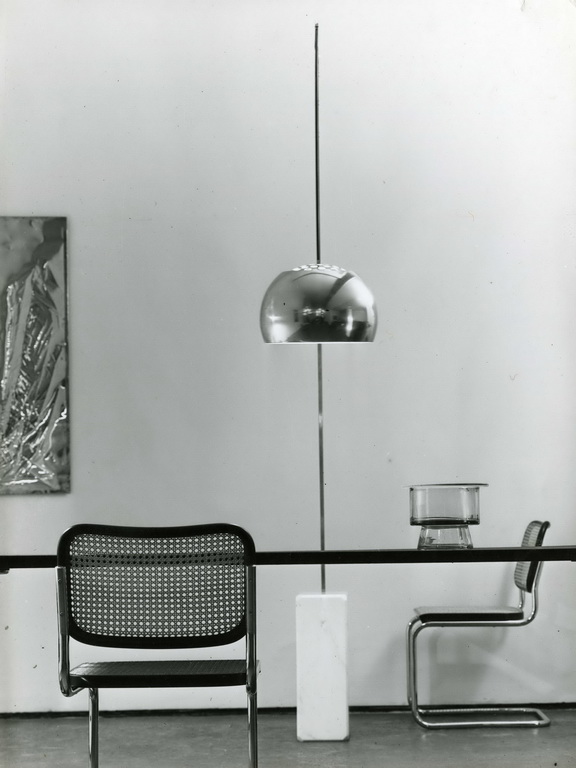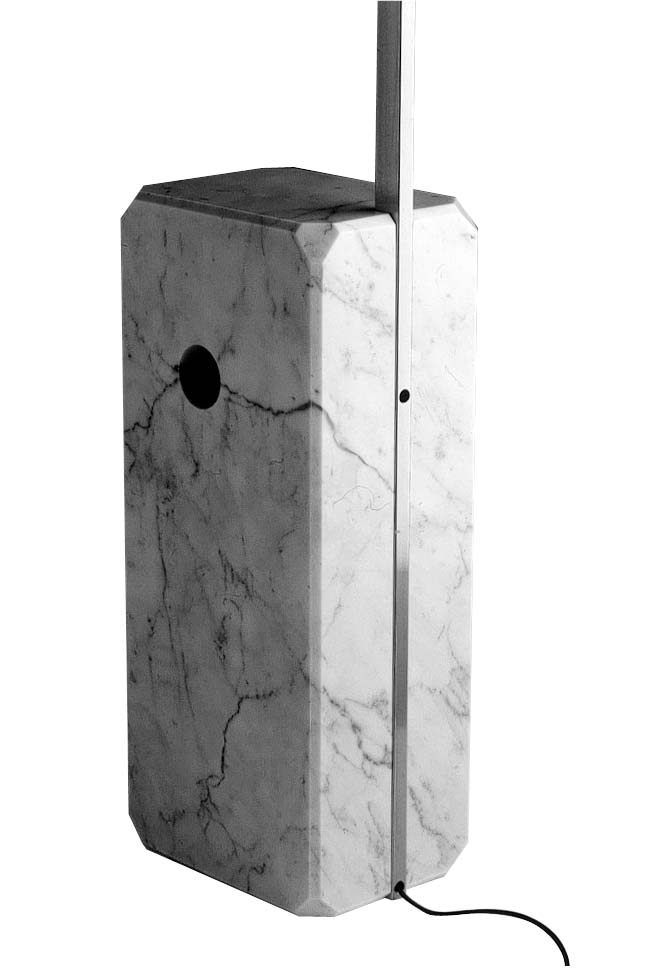24 July 2014
There is nothing more domineering than a hanging lamp when it comes to arranging furniture in a room: once suspended from the ceiling, it will condition the layout of all the rest. Always. In 1962 the brothers Achille and Pier Giacomo Castiglioni came up with the idea of an illumination from above that would have the same effect as a pendant, but without the need to fix the lamp to the ceiling. The solution was suggested by the best of light sources anchored to the ground: the street lamp. And so Arco was born, three curved sections of metal that shepherd the electric wire to a hemispherical lamp holder, fixed firmly to the ground by a heavy marble base. However, the real genius of the design finds expression not in the solids, but in the voids of the lamp, in its holes: one, the most important, is located in the marble base and allows a length of cloth or a broom handle to be passed through it, making it possible to carry the whole object around in space (a space that in those years was increasingly filling up with nomadic objects). The hemispherical shade of the lamp holder is also pierced by many holes: these not only provide ventilation and prevent overheating, but emit beautiful beams of light that play over the walls of the room, in a way that only the crystals of a classical chandelier had been able to do hitherto. With Arco lighting really became mobile and the curved shape of this “hanging floor lamp” earned itself a place in the history of world design. Manufacturer: Flos.

Photo: Gionata Xerra.

Photo: Giorgio Casali, 1969.






Advertising campaign by Jean-Baptiste Mondino.

Photo: Germano Borrelli.

Achille Castiglioni.

Achille and Pier Giacomo Castiglioni. Photo: Luciano Ferri.